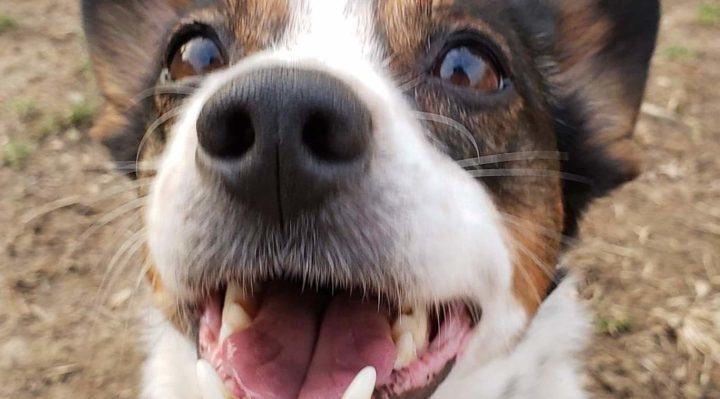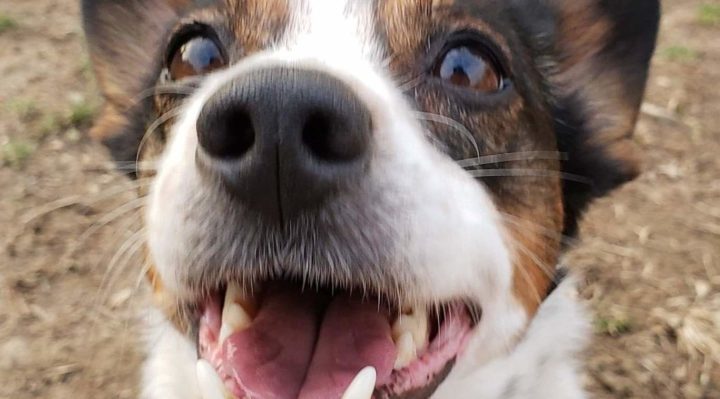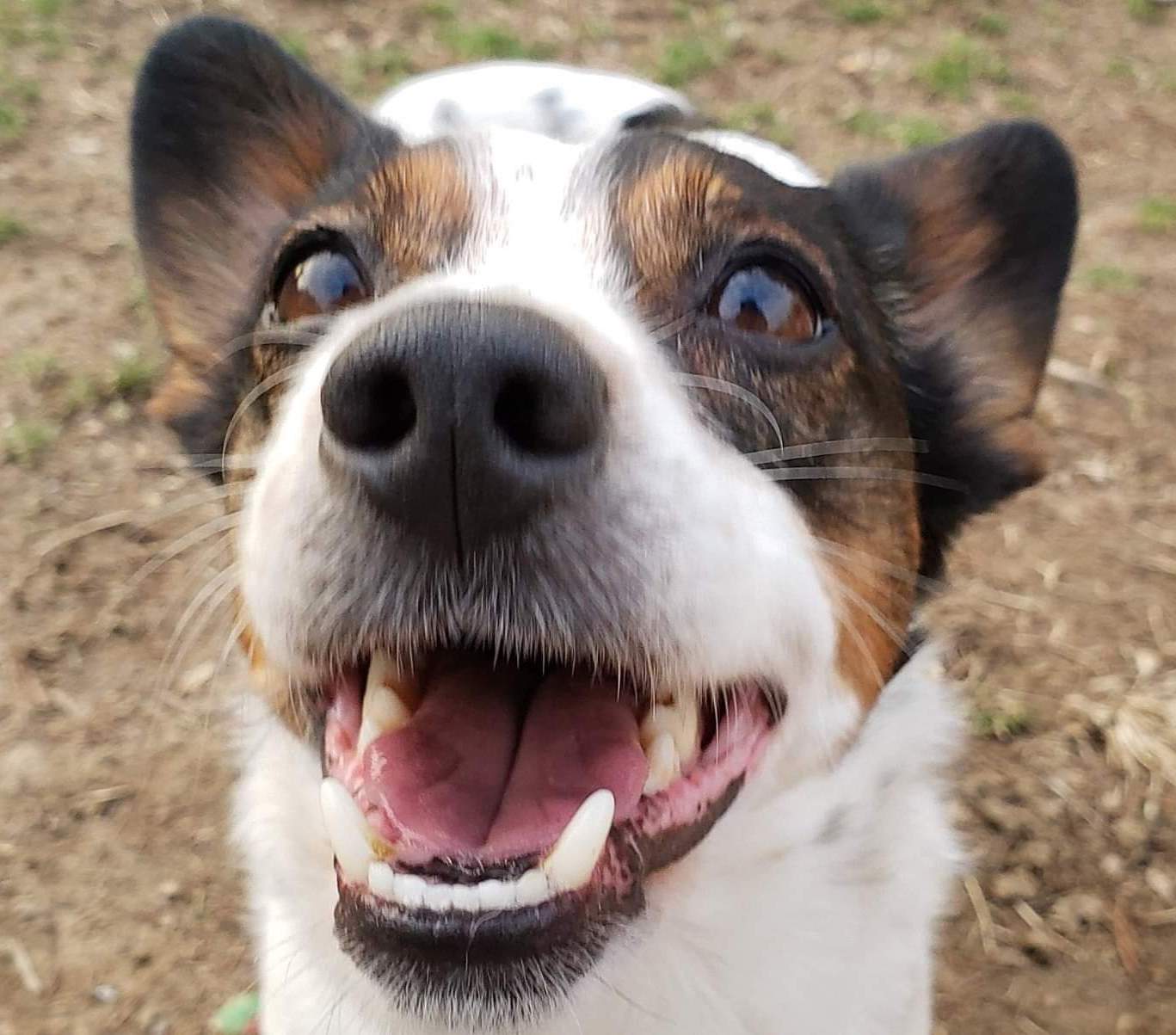


I decided on the topic for this article after a short conversation I had recently with someone who was asking about private training for a friend’s dog. I was surprised to be asked if I “went to people’s homes” myself because I am retired and, in the middle of a pandemic, I am, like many of us, not going to anybody’s home for any reason—for my own safety and for theirs.
The person who asked me about “in-home” training said they weren’t sure if the dog was fearful or aggressive. Humans had been bitten. I immediately suggested that they contact a local training business that I could recommend highly. The person who asked me replied that they were unaware that the particular business “worked with dogs with issues.” I was amazed. I was told that this person had talked to people who’d taken classes at that business. “They are too soft and only deal with positive reinforcement,” I was told. “So I just thought that’s their way.”
My response was, I admit, somewhat astounded. I asked if their hope was to find someone who could deal with their friend’s fearful dog through punishment. I asked if they were unaware of the science that backs up positive reinforcement as being far more effective (not to mention more humane) than punishment. Their answer: “No, I’m not. I just didn’t know they did that type of work.”
When the person who’d contacted me went on to answer my question more thoroughly, I asked if they were aware of LIMA. They said, “Not by initials. Perhaps if I knew what it stands for.”
“LIMA” is an acronym for the phrase “least intrusive, minimally aversive.” LIMA describes a trainer or behavior consultant who uses the least intrusive, minimally aversive strategy out of a set of humane and effective tactics likely to succeed in achieving a training or behavior-change objective.
In 2018, three of the most respected professional training organizations—The Certification Council of Professional Dog Trainers (CCPDT), the Association of Professional Dog Trainers (APDT), and the International Association of Animal Behavior Consultants (IAABC)—came together jointly to adopt and announce a Standards of Practice, a unified code of conduct and a code of ethics, in what’s been called a “groundbreaking statement of unity” among professional organizations.
Strong professional ethics, education, and expertise within our profession are crucial to the wellbeing of the animals and humans we serve. The Standards of Practice is a set of cross-association guiding principles that will allow practitioners to understand what it means to be a competent, ethical professional in our field, and offers recourse to those rightfully demanding excellence in the field.
These shared standards provide a framework of principles, professionalism, skills, and values in positive reinforcement-based training. As members/certificants, each individual will undertake the following as a condition of membership/certification:
● To understand and promote Least Intrusive, Minimally Aversive (LIMA) training and behavior work
● To continue professional development by reading relevant material; attending conferences, workshops and seminars; and pursuing other educational opportunities
● To review and understand source material and academic texts for information
● To abstain from representing training and behavioral information as scientific, unless the information is derived from peer-reviewed and published research
● To refrain from offering guarantees regarding the outcome of training and behavior work
● To always maintain professionalism through:
▪ Providing services honestly
▪ Treating animals and clients respectfully
▪ Valuing and preserving the privacy of clients
▪ Maintaining professionalism with colleagues and other professionals.
I have to admit, I was more than surprised at this point. The person who’d contacted me, they said, is an instructor at a local dog-training club. An instructor of dog training who was not aware of one of the most important principles in the art and science of dog training today? An instructor of dog training who was unfamiliar with the standards of practice and code of conduct adopted jointly by three of the most respected professional training organizations—in 2018? I find that astounding, and very disappointing.
As the person who’d contacted me went on to describe the instruction available at their “positive based” club, I realized they were describing “instruction” that did not sound one bit dissimilar to the “instruction” that club had been offering in 1980. While knowledge about dog training has advanced enormously in the last 30 years, this instructor apparently had failed to get the news. Why?


Photo by Erin Saywell
Marge Rogers, CBCC-KA, CPDT-KA, explains what’s happened since 1980 and why it’s important:
The model of dog training is changing for the average pet owner. “Back in the day,” when I wanted to train my dog, I went to the local obedience club. Local clubs are generally made up of a group of dog fanciers with an interest in training. They train as a hobby. They often compete in obedience and other sport dog competitions like rally, agility, tracking, and so on. In the clubs I am familiar with, many of the instructors volunteer to teach classes that are offered to the general public. Clubs often offer basic obedience, Canine Good Citizen preparation and testing, puppy and sport dog classes. These are wonderful places to learn from experienced competitors and learn about the many fun activities you can do with your dog. They are also places that foster camaraderie and, if you’re lucky, lifelong friendships.
As pets have become a more important part of our lives, the “profession” of dog training emerged. People started training dogs full-time for a living. We spend a lot of money on our pets and training and containment franchises started appearing on the training landscape. Behavioral “colleges” were created, professional organizations formed, and information on the science of animal behavior became more readily available to everyone because of the Internet and social media.
The past few decades, dog training exploded like the Wild West: a lot of growth and expansion with many new people entering unfamiliar territory. The expansion is exciting, but what has evolved is an unregulated profession. And, it’s a “buyer beware” situation for pet owners. An unknowing pet owner could be paying someone who literally has no understanding of the science of how dogs learn, or someone who recommends tools or training that actually harm their dog, or a knowledgeable and skilled “hobby” trainer. Can you imagine paying a plumber and having him make your problem worse? Or hiring an accountant who does accounting as a “hobby”? I view the joint adoption of the Standards of Practice and Code of Conduct as a giant leap forward for dogs, their owners, and the profession of dog training.
https://rewardedbehaviorcontinues.com/2019/01/09/something-big-happened-in-dog-training/
So how can you, a novice dog owner, know if a trainer or instructor, has been reading the news? Is there a simple way to figure out if someone is qualified to tell you or your dog what to do? Can you be sure that the guidance you’ll be given will be appropriate, even safe? Whose advice can you trust?
I asked animal professionals about interviewing trainers: “What questions do you ask?”
Ben Bennink (New York) I would start with Jean Donaldson’s recommended three:
1. What will we do if my dog gets something right?
2. What will we do if my dog gets something wrong?
3. Is there a less invasive method than what you’ve described?
Then I’d go into maybe asking about credentials they have, time spent in continuing education, etc.
Dale Ward (North Carolina) “Please tell me about the pieces of equipment you use when training dogs.”
That’s all I need to know!
September B. Morn (Washington)
1. Please tell me your preferred method for teaching a dog to lie down.
2. What if that doesn’t work? What’s your Plan B?
Their answers will probably tell me all I need to know.
Lori Leah Monet DVM (Colorado) Do you know what “reward,” “positive reinforcement,” “negative reinforcement,” and “punishment” mean? What do you do with each one?
Carol Duncan (Texas) The words “positive reinforcement” and “positive training” have been picked up by trainers who use dominance-based methods and various aversives. Just because someone says they use positive methods doesn’t mean they do. I stopped by a training center that had a bad reputation a few years ago and I pretended to be an ordinary citizen inquiring about their services. They told me they used “positive methods.” However, the whole wall was covered with choke chains. I asked about them and was told they were not “choke chains” but “training collars.”
Alicia Graybill (Nebraska) First question, how would you potty-train a three-year-old human? Their response will tell me a great deal about their use of force, physical manipulation, or positive reinforcement. Then I ask about how they would potty-train an eight-week-old puppy. If they do something to the puppy that they wouldn’t do to the three-year-old, I’m walking away.
Pamela Dennison (New Jersey) wrote an excellent article about Finding A Trainer:
https://www.pamdennison.com/finding-a-trainer/
Next week, more suggestions on how to interview a prospective trainer or instructor for your dog and you, including an example of one crazy training method you might run across on YouTube and the reactions of animal professionals with education and experience who hope you won’t try it out!



